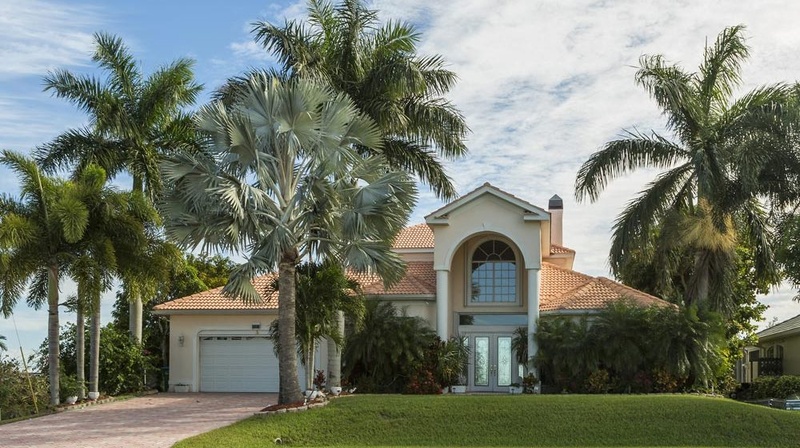
Plant a Palm
Palm trees add a wonderful tropical vibe to any landscaping. Use short, wide palms as privacy screens, understory plantings, or in big pots by the pool. Plant tall palms as single specimen plants, landscape bed anchors, or processionals down long driveways.
If you’re after a tropical look for your Florida landscaping, there’s nothing like a palm tree or two to set that vibe. While South Florida has the perfect climate for palm trees, even North Florida can grow cold-hardy varieties.
Characteristics of the Palm Tree
A palm tree is an evergreen plant with either pinnate or palmate leaves. Palmate leaves grow from one central point, like fingers that extend from a palm. Pinnate leaves grow along opposite sides of a stem, like a feather.
There are over 2,500 species of palm trees that grow around the world. Some are very tall (record-height palms grow in Colombia and can reach almost 200 feet); some are short with virtually no trunk at all; some have multiple trunks.
Native and Non-Native Palms
Although most of the world’s palm varieties can grow in Florida, only twelve of them are native to Florida. These include the Buccaneer Palm Tree, the Paurotis Palm, and the Royal Palm. The Buccaneer is considered by some landscaping professionals to be the hardiest palm for coastal properties.
Palms that grow in Florida but are not native to the state have been imported from Southeast Asia, South America, India, and Cuba.
Short Palm Trees for Your Landscape
A small palm tree is 20 feet tall or less. Small palms for landscaping include Adonidia “Christmas Palm,” Areca, Arenga, Arikury, Bamboo Palm, Bottle, Buccaneer, Cat, European or Mediterranean Fan, Florida Thatch, Lady, Madagascar, Pindo, Pygmy Date, Silver Saw Palmetto, Spindle, and Windmill. (Check cold hardiness to make sure your selection will thrive if you’re in North Florida.)
Tall Palm Trees for Your Landscape
Large palms grow to over 20 feet tall. Consider one of these tall palms for your landscaping: Alexander, Canary Island Date, Chinese Fan, Coconut, Fishtail, Foxtail, Latania, Paurotis, Piccabeen, Ponytail, Queen, Ribbon Fan, Royal, Silver Bismarck, Sylvester, Travelers, Triangle, and Washingtonia. Again, choose one that will grow well in your planting zone.
Where to Place a Palm Tree
Plant small palm trees in a row as a privacy screen down a property line or around a porch. Some look great in large containers by a pool. Use small palms to anchor beds or as specimens at the corner of your house. Grow them as understory plantings or as the backdrop in a collection of layered plants.
Large palm trees are great as the main specimen plant in an average yard. Use them down the median of a special street or beside a long entry driveway. Install one in the middle of a circular drive or in a large bed.
How to Trim a Palm Tree
Only trim the leaves of a palm tree. Never cut off the trunk (that will kill the palm). Remove browned fronds by making clean cuts at their bases.
The old fronds of some palms droop, dry out and form a skirt around the trunk. This can be left or trimmed off. We recommend hiring a professional to trim frond skirts on palms that are over 20 feet tall.
Some palms are self-cleaning—fronds fall off on their own when they are dead.
Conclusion
There are many palms to choose from for your landscaping. You can plant them singly as focal points, grow them in groups, or install several different types for variety and interest.